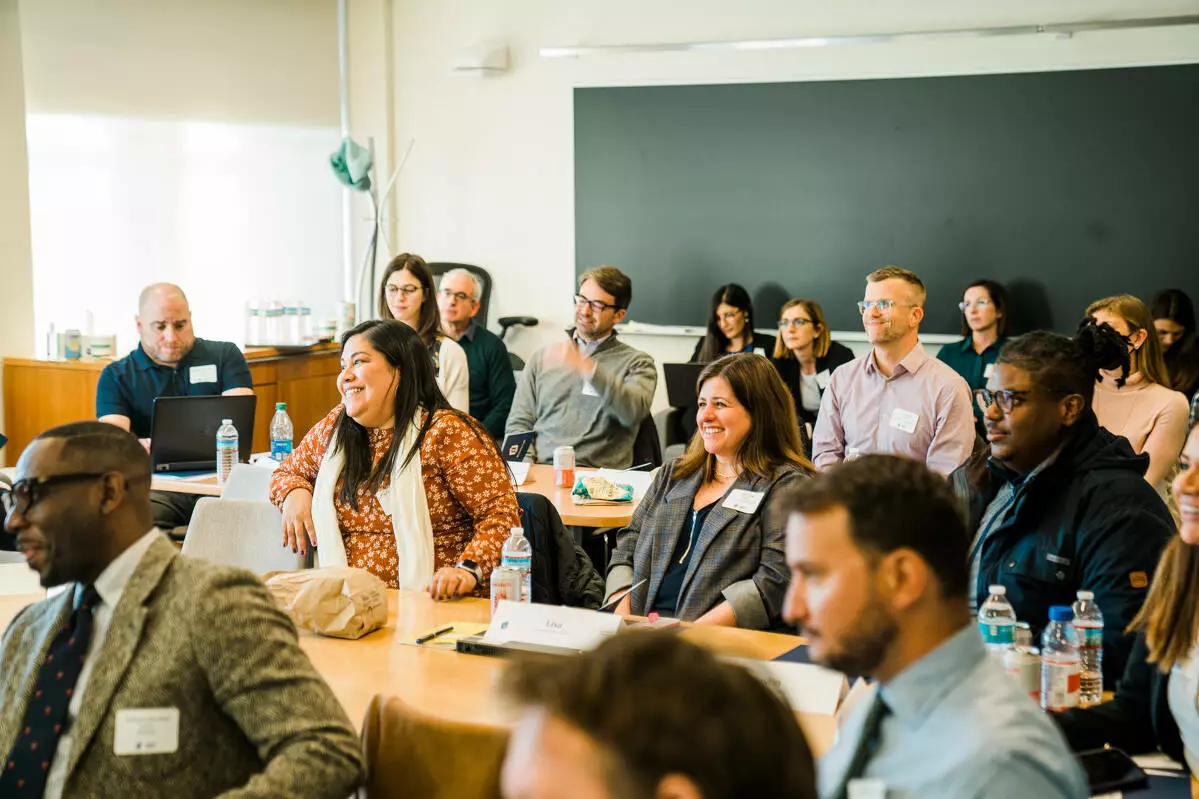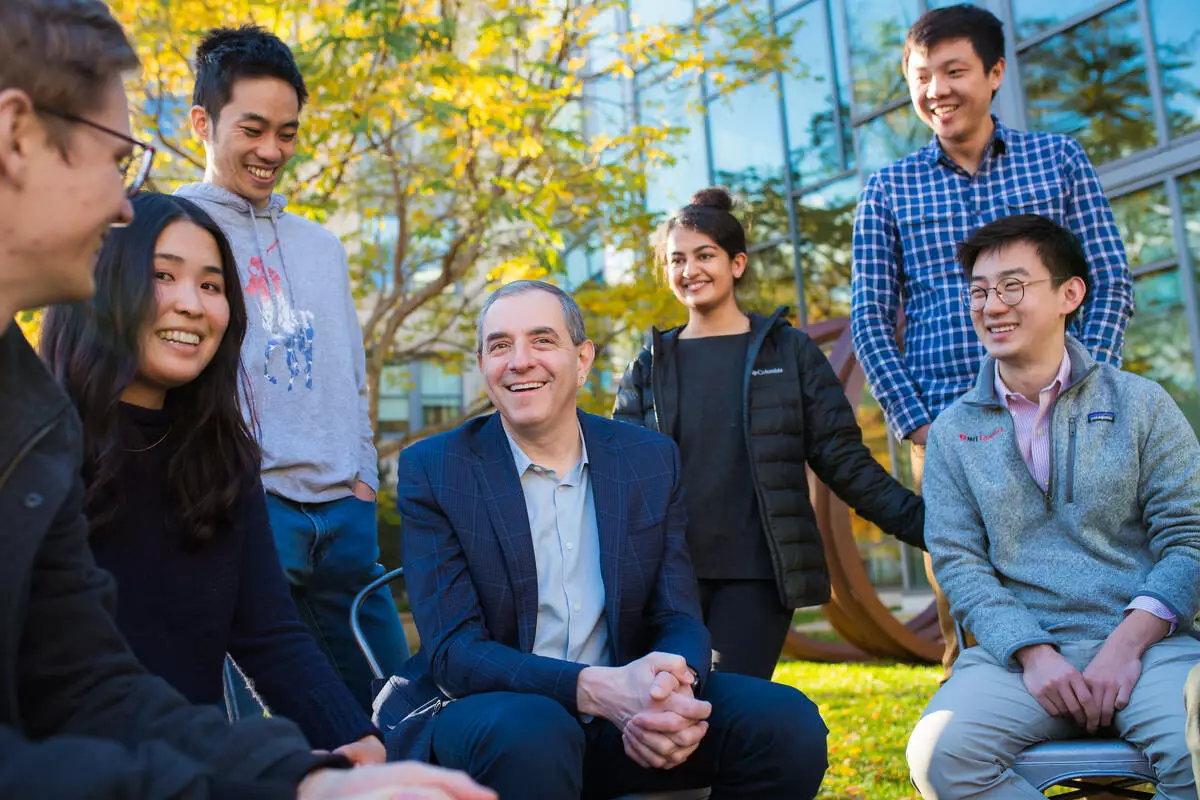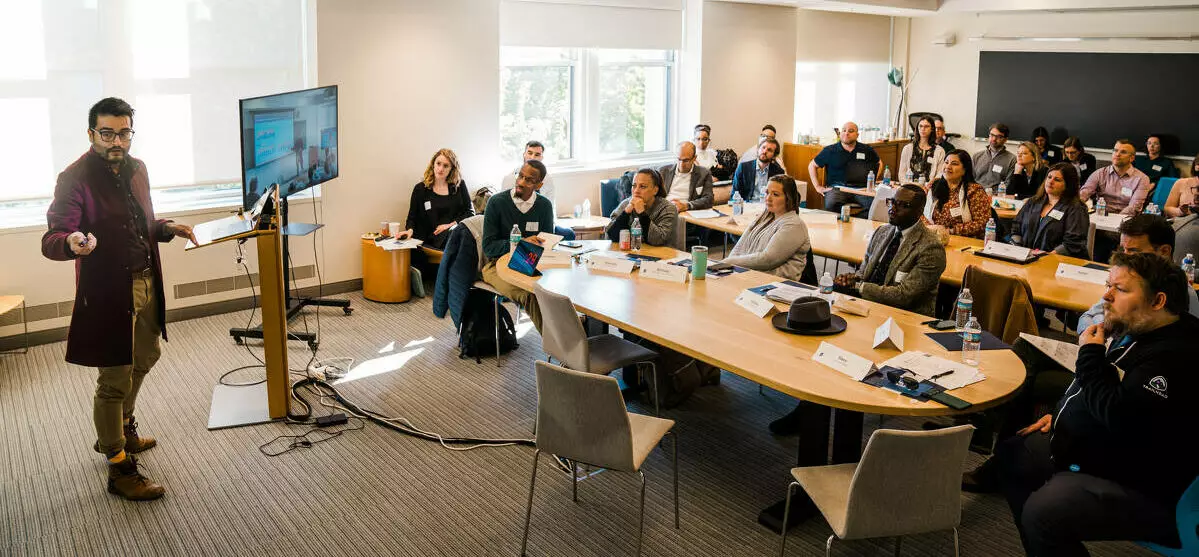On behalf of MIT Blueprint Labs, we want to extend a heartfelt thank you for your support this year. 2022 was a time of growth at Blueprint as we investigated the most pressing issues in education, health care, and the workforce. We are excited to continue this important work in the new year.
In 2022, our faculty and affiliates released 22 groundbreaking research papers. You can find a few highlights below.
Parents increasingly rely on school ratings to choose schools and districts use them to guide policy. Despite their ubiquity, a common concern exists: higher-rated schools tend to have a greater share of white and affluent students. In a forthcoming paper in American Economic Review: Insights, Blueprint researchers investigate the relationships between ratings, race, and school quality. Check out our policy brief to learn about a new measure we developed that removes all correlation with race and is more predictive of true school quality than conventional ratings.
In another line of education work, we examine the effects of district-wide choice systems, which allow students to enroll in schools outside their neighborhoods. Blueprint researchers find that school travel increases racial integration but generates little change in test scores or college attendance. Read more in our policy brief.
Consumer choices in health care and other fields are often constrained by more than just money. In a new working paper, Blueprint researchers examine consumer choices and admissions in the kidney dialysis market. They find strong evidence of supply-side rationing: dialysis facilities with high occupancy are less likely to admit new patients and patients are more likely to travel further when nearby centers have high caseloads. The Tech recently featured these findings and other groundbreaking work from Blueprint, including the development of new strategies to improve the kidney transfer system.
The Paycheck Protection Program (PPP) extended $800 billion in loans to small businesses. In a new study published in the Journal of Economic Perspectives, Blueprint researchers find that while the PPP saved jobs, the majority of loan dollars did not go to paychecks. In related research (forthcoming in the Journal of Public Economics), the authors estimate the causal effect of the PPP on the evolution of employment. The New York Times, WBUR, and other media outlets highlighted these findings.
We remain firmly committed to ensuring that our research has real-world policy impact. Throughout the year, we held outreach events to convene practitioners, policymakers, and researchers.
In April, we hosted a conference at MIT focused on measuring school quality. At this event, leading researchers, policymakers, and school accountability practitioners exchanged best practices and learned about the latest research. In May, our second cohort of School Access and Quality Fellows traveled to Denver and learned about Denver Public Schools’ enrollment practices. This October, we welcomed our third cohort of fellows to Cambridge to kick off a year of learning about enrollment equity. You can read more about our outreach events below.
Thank you for your continued engagement with Blueprint Labs. As we continue to grow, we are more motivated than ever to fulfill our mission of uncovering the consequences of policy decisions and improving society.
Warmly,
Eryn Heying
Executive Director, Blueprint Labs

Acemoglu, Daron, David Autor, Jonathon Hazell, and Pascual Restrepo. “Artificial intelligence and jobs: evidence from online vacancies.” Journal of Labor Economics, 40(S1) (April 2022): S293-S340.
Autor, David, David Cho, Leland D. Crane, Mita Goldar, Byron Lutz, Joshua K. Montes, William B. Peterman, David D. Ratner, Daniel Villar Vallenas, and Ahu Yildirmaz. “The $800 billion paycheck protection program: where did the money go and why did it go there?.” Journal of Economic Perspectives, 36(2) (Spring 2022): 55-80.
Greenberg, Kyle, Lan Jiang, Courtney A. Johnson, Donald R. Miller, Shailender Swaminathan, Amal N. Trivedi, and Wen-Chih Wu. “Association of disability compensation with mortality and hospitalizations among Vietnam-era veterans with diabetes.” JAMA Internal Medicine, 182(7) (July 2022): 757-765.
Autor, David, David Cho, Leland D. Crane, Mita Goldar, Byron Lutz, Joshua K. Montes, William B. Peterman, David D. Ratner, Daniel Villar Vallenas, and Ahu Yildirmaz. “An evaluation of the paycheck protection program using administrative payroll microdata.” Journal of Public Economics, 211 (July 2022): 104664.
Bariola, J. Ryan, Chung-Chou H. Chang, Naudia N. Jonassaint, Erin K. McCreary, Parag Pathak, Govind Persad, Mark Schmidhofer, Tayfun Sonmez, Robert D. Truog, M. Utku Ünver, and Douglas B. White. “A multicenter weighted lottery to equitably allocate scarce COVID-19 therapeutics.” American Journal of Respiratory and Critical Care Medicine, 206(4) (August 2022): 503-506.
Jack Mountjoy. “Community colleges and upward mobility.” American Economic Review, 112(8) (August 2022): 2580-2630.
Acemoglu, Daron, and Pascual Restrepo. “Tasks, automation, and the rise in US wage inequality.” Econometrica, 90(5) (September 2022): 1973-2016.
Acemoglu, Daron, Nicolaj Søndergaard Mühlbach, and Andrew J. Scott. “The rise of age-friendly jobs.” The Journal of the Economics of Ageing, 23 (October 2022): 100416.
Combe, Julien, Olivier Tercieux, and Camille Terrier. “The design of teacher assignment: theory and evidence.” The Review of Economic Studies, 89(6) (November 2022): 3154-3222.
Acemoglu, Daron, Gary Anderson, David Beede, Cathy Buffington, Eric Childress, Emin Dinlersoz, Lucia Foster, Nathan Goldschlag, John Haltiwanger, Zachary Kroff, Pascual Restrepo & Nikolas Zolas. “Automation and the Workforce: A Firm-Level View from the 2019 Annual Business Survey.” Blueprint Discussion Paper #2022.16
Agarwal, Nikhil and Paulo Somaini. “Demand analysis under latent choice constraints.” Blueprint Discussion Paper #2022.06
Angrist, Joshua. “Empirical Strategies in Economics: Illuminating the path from cause to effect.” Blueprint Discussion Paper #2022.03
Angrist, Joshua, Guthrie Gray-Lobe, Clemence M. Idoux, and Parag A. Pathak. “Still Worth the Trip? School Busing Effects in Boston and New York.” Blueprint Discussion Paper #2022.12
Angrist, Joshua, Peter Hull, Parag Pathak, and Christopher Walters. “Race and the Mismeasure of School Quality.”Blueprint Discussion Paper #2022.01
Autor, David. “The Labor Market Impacts of Technological Change: From Unbridled Enthusiasm to Qualified Optimism to Vast Uncertainty.” Blueprint Discussion Paper #2022.08
Autor, David, Caroline Chin, Anna M. Salomons, and Bryan Seegmiller. “New Frontiers: The Origins and Content of New Work, 1940–2018.” Blueprint Discussion Paper #2022.13
Cohodes, Sarah, Helen Ho, Silivia C. Robles. “STEM Summer Programs for Underrepresented Youth Increase STEM Degrees.” Blueprint Discussion Paper #2022.10
Cohodes, Sarah, Sean Corcoran, Jennifer Jennings, and Carolyn Sattin-Bajaj. “When do Informational Interventions Work? Experimental Evidence from New York City High School Choice.” Blueprint Discussion Paper #2022.09
Combe, Julien, Umut Dur, Olivier Tercieux, Camille Terrier, and M. Utku Ünver. “Market Design for Distributional Objectives in (Re)assignment: An Application to Improve the Distribution of Teachers in Schools.” Blueprint Discussion Paper #2022.04
Idoux, Clémence. “Can Selective School Admission Reforms Increase Student Achievement?.” Blueprint Discussion Paper #2022.15
Idoux, Clémence. “Integrating New York City schools: The role of admission criteria and family preferences.” Blueprint Discussion Paper #2022.14
Pathak, Parag, Govind Persad, Tayfun Sönmez, and M. Utku Ünver. “Reserve System Design for Allocation of Scarce Medical Resources in a Pandemic: Some Perspectives from the Field.” Blueprint Discussion Paper #2022.07

David Autor with students. Photo credit: Gretchen Ertl.
The Committed to Caring program honored Blueprint Co-Director David Autor for his unique approach to graduate student mentorship and advocacy. Autor goes above and beyond in his mentorship of graduate students by being an encouraging mentor and treating them as peers. He has also advocated for student rights and the importance of diversity, equity, and inclusion initiatives within the Economics Department.
Blueprint affiliate Emily Oster was honored on TIME’s list of the 100 Most Influential People of 2022. Oster is widely acclaimed for her work on choices in pregnancy and parenting, through her books Expecting Better, Cribsheet, and The Family Firm, as well as op-eds in various news outlets.
Blueprint Director Parag Pathak was named the 2022 Teacher of the Year by the MIT Graduate Economics Association.

School Quality Measures Conference – April 29, 2022
Blueprint convened leading researchers, policymakers, and school accountability practitioners to foster a robust network of professionals focused on school quality and brainstorm solutions to real-world challenges.
School Access and Quality Fellowship City Learning Visit – May 6, 2022
Blueprint’s second cohort of School Access and Quality fellows met in Denver for a city learning visit. This one-year fellowship is designed for education leaders currently researching, implementing, or expanding enrollment reform. The fellows learned about Denver Public Schools’ enrollment practices.
Econometric Society Summer School in Dynamic Structural Econometrics – August 15-20, 2022
Blueprint co-director Nikhil Agarwal co-organized the 2022 Econometric Society Summer School in Dynamic Structural Econometrics: Market Design and the adjacent Annual Conference. The summer school provided early-stage PhD students with tools to apply economic theory to empirical work.
School Access and Quality Fellowship Kickoff – October 21, 2022
Blueprint launched the third cohort of the School Access and Quality Fellowship with a full-day kickoff. Our 22 fellows join from school districts, nonprofits, state agencies, and charter organizations from across the country.

We look forward to sharing findings from several exciting studies and expanding our outreach to further engage policymakers and practitioners.
We are currently preparing to launch the Shaping the Future of Work Initiative, which will study the ongoing job quality crisis, specifically the disappearance of well-paying, stable, and career-building jobs for non-college educated workers. Led by MIT Professors David Autor (Blueprint Co-Director), Daron Acemoglu (Blueprint Affiliate), and Simon Johnson, and receiving generous support from the William and Flora Hewlett Foundation, this new initiative will advance new, multi-disciplinary approaches to policy-relevant economics research on job quality, regional disparities in prosperity and opportunity, and automation, inequality, and productivity. The initiative will also support the development of emerging scholars and conduct outreach activities to inform policymakers and the public.
Subscribe for Updates